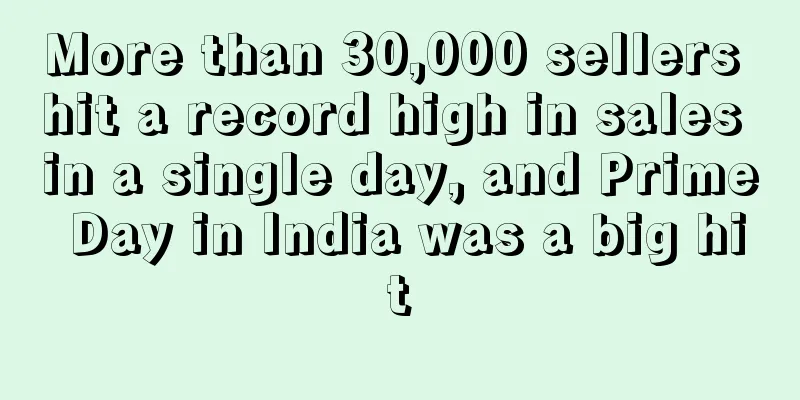Halloween spending by U.S. consumers hits record high!

|
As a traditional festival in the West, Halloween has gradually evolved into a carnival. When Halloween comes, children will dress up as various cute elves and ghosts, carry a pumpkin lantern, go door to door to ask for candy, and play until late at night.
In order to celebrate Halloween, consumers need to prepare candy, costumes, pumpkin lanterns and other necessities for the festival in advance. Halloween has gradually become a popular shopping festival for major retailers. According to the annual survey of the National Retail Federation conducted by Prosper Insights & Analytics in the United States , US consumer spending on Halloween-related products is expected to hit a record high of US$10.14 billion, which is much higher than the level of US $8.05 billion in 2020 .
The number of Americans planning to celebrate Halloween this year has increased compared to the same period last year , approaching pre-pandemic levels. An estimated 65% of Americans intend to celebrate or participate in Halloween activities this year, up from 58% in 2020. In comparison, it is slightly lower than the 68% level in 2019 before the COVID- 19 pandemic .
The average amount consumers plan to spend on Halloween items is also increasing. It is reported that consumers plan to spend an average of $102.74 on costumes, candy, decorations and greeting cards , which is $10 more than last year . It is worth mentioning that consumers plan to spend a total of $3.32 billion on costumes , the highest level since 2017 .
Meanwhile , consumers are planning to start Halloween shopping earlier than usual this year , with 45% saying they plan to start buying Halloween items this month, and 39% planning to start shopping in the first two weeks of October.
The main ways consumers plan to celebrate Halloween include distributing candy, decorating rooms and yards, wearing specific costumes to play ghosts , carving jack-o'-lanterns , and hosting or attending parties . In contrast, families with children are more likely to celebrate Halloween than families without children.
As the number of American households with pets has increased during the pandemic, interest in pet costumes has also increased. One in five American consumers intend to buy Halloween costumes and other items for their pets this year. Spending on decorative items is expected to climb to $3.17 billion this year , up from $2.59 billion last year.
This year's Halloween is a huge opportunity for all major merchants. At the same time, the inventory pressure brought by the global shipping crisis still exists. Therefore, major merchants should prepare in advance and do a good job of inventory management to avoid product shortages during the peak sales season. Halloween Market Forecast Shopping Trends |
<<: eBay updates payment system, 99% of orders can be paid in advance!
>>: 76,000 adult dry-top snorkels recalled due to drowning hazard
Recommend
Amazon's shipping policy has changed, several types of goods will be rejected!
At the beginning of this year, many sellers repor...
What is Cambridge Mobile Telematics? Cambridge Mobile Telematics Review, Features
Cambridge Mobile Telematics is a provider of driv...
What is RedFlagDeals
RedFlagDeals is a coupon website operated by Yell...
What is DoveConveni? DoveConveni Review, Features
DoveConveni is committed to providing shoppers wit...
What is Mingte Overseas Warehouse? Mingte Overseas Warehouse Review, Features
Mingte Overseas Warehouse is an overseas warehousi...
After the peak season, the return rate of online shopping in the United States increased to 25%, and sellers' costs will increase again!
After the shopping boom, sellers are about to fac...
Tmall Double 11: More than 2.2 million small and medium-sized businesses doubled their transactions
As of 0:00 on November 11, more than 2.2 million ...
94% of European e-commerce websites have errors on the checkout page
In this era of rapid development of e-commerce, c...
"Declaring war" on Amazon, Russian e-commerce giant WB opens three more European sites
According to foreign media reports on the 24th, W...
What is Paycoin? Paycoin Review, Features
<span data-docs-delta="[[20,{"gallery"...
What is Honestbee? Honestbee Review, Features
Honestbee is an online grocery delivery service c...
Web accessibility lawsuits increase, with retailers a prime target
In late 2020, online spice retailer Spiceology ch...
Meiya ranks first in market share! Another big seller gets financing
In recent times, many companies going overseas ha...
Unable to bear the pressure! Shenzhen freight forwarder announced closure at the end of the year
This year, the freight forwarding industry has be...
In February, the total viewing time of Twitch live broadcasts reached 1.86 billion hours, an increase of 82% year-on-year
Live streaming and other video content on the Int...









